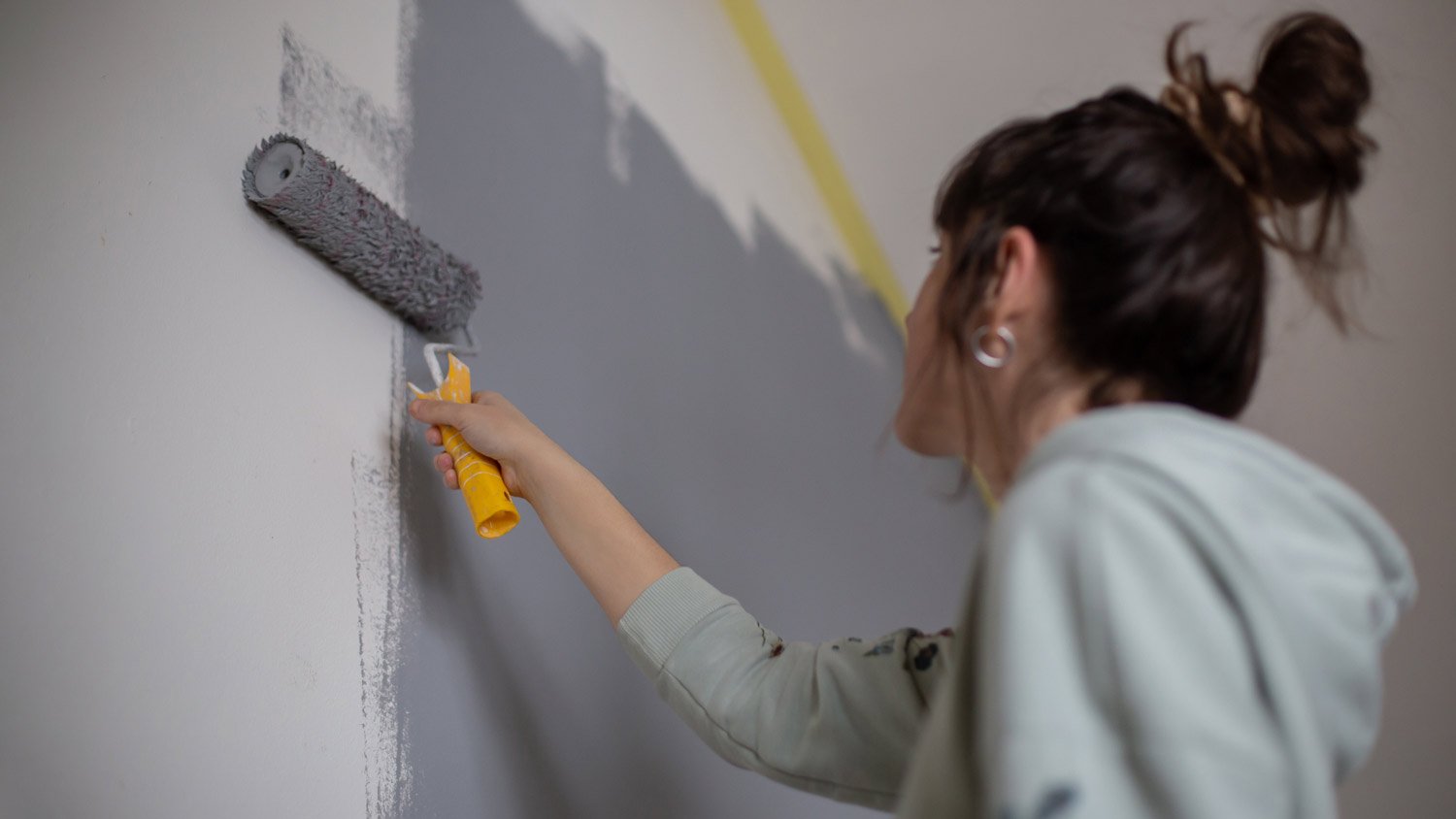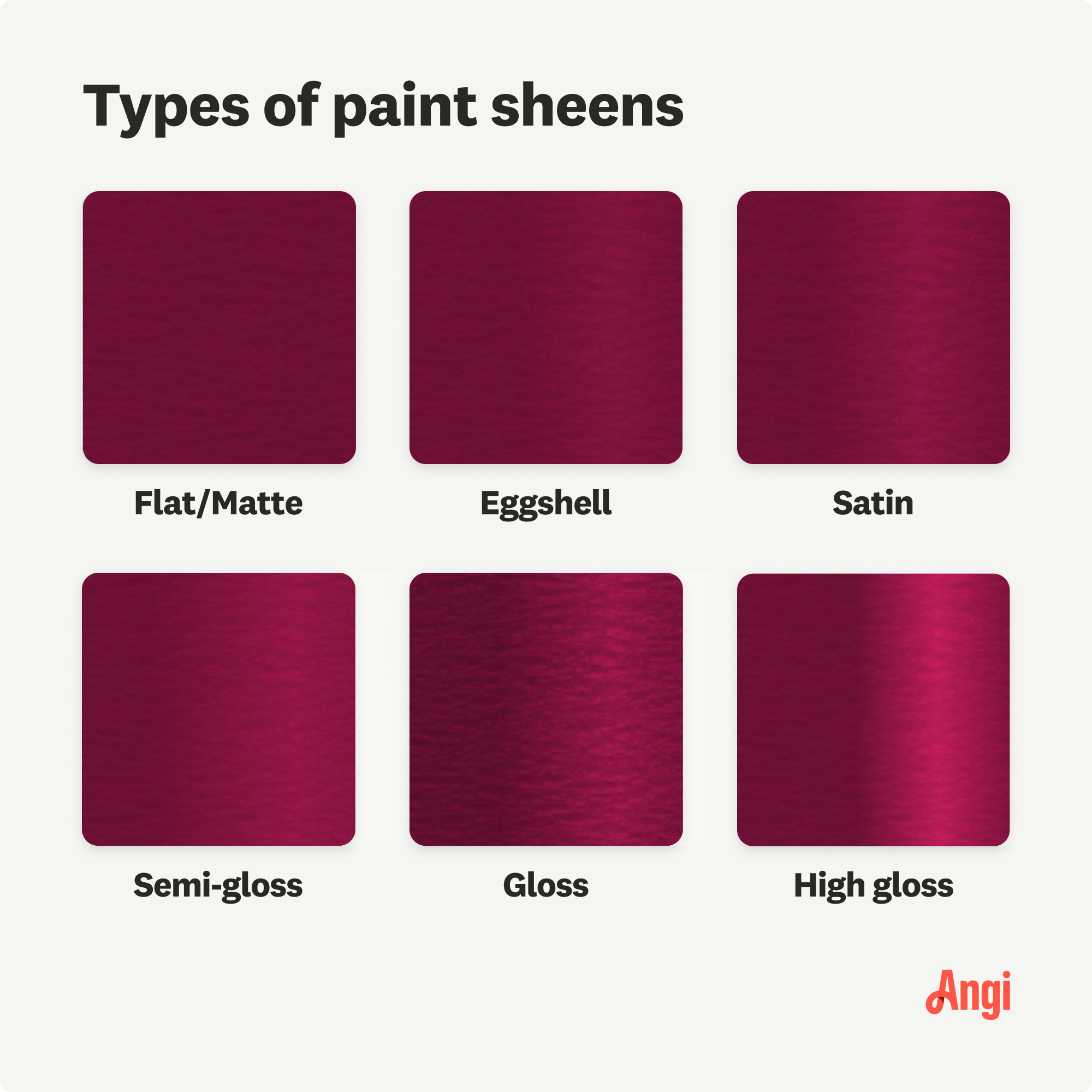
The cost to paint the interior of a house in Columbus, OH depends on size, layout, type of surface, and more. Learn what factors can influence your total in this guide.
The right sheen can help your painted surfaces shine brighter


Sheen refers to the amount of light reflected on a painted surface.
A paint’s sheen affects its appearance, durability, and performance.
High-sheen paint contains more enamel, making it glossy and durable.
One downside of sheen is that it makes surface defects more apparent.
Paints with lower sheen appear flat, and they’re more susceptible to stains and scratches.
Picking the right paint can make or break your interior makeover. One important consideration is sheen, which refers to the amount of light reflection on a painted surface. Sheen contributes to the glossiness of the paint, and it also impacts durability, washability, and performance. So what is sheen, and how many options are available? Learn what you need to know about paint sheen before kicking off your painting project.

Sheen is a measure of light reflection on a paint’s surface, and you’ll come across the term when choosing paint colors for your home interior. Paints with higher sheen reflect more light, which gives them a shiny and glossy appearance. Low-sheen paints absorb light so they look flat, and they also have greater amounts of pigmentation.
Aside from appearance, sheen also impacts the durability of paint. High-sheen paints resist damage better because they contain more enamel. They’re also easier to clean due to their protective coating. In contrast, low-sheen paints don’t hold up as well against stains or scratches, and scrubbing them can damage the finish.
Sheen also influences the cost to paint the interior of a house, with prices increasing for higher sheens.
Interior painting offers a high ROI of around 107%. That means that most homeowners will recoup between $2,100 and $16,000, depending on the size of their painting project. Neutral colors are more appealing to potential buyers than darker colors.

The right sheen depends on the look you want to achieve and the function of the room. Knowing the differences can help you decide between satin versus flat paint or eggshell versus semi-gloss paint. Below are the levels of paint sheen, from the least glossy to the most glossy.
Because flat paint doesn’t reflect light, it has no sheen. The finish makes colors appear more pigmented, and it masks minor flaws like scratches, stains, and scuffs. As a downside, the painted surface is easily damaged. Scrubbing the walls too harshly can result in scratching or fading. Homeowners often choose flat paint for low-traffic areas and walls that are blemished, large, or sun-washed.
Another low-luster option, matte paint hides imperfections almost as well as flat paint. This sheen gives vibrancy to colors on the wall, though it’s not as durable as other options. As a result, some people avoid using matte paints in high-traffic areas, but they’ll choose this sheen for bedrooms, dining rooms, and formal living rooms.
Eggshell is a popular choice for rooms with regular traffic. When comparing eggshell versus matte paint, the eggshell option has slightly more shine and durability. Homeowners can gently wash their walls without worrying about damaging them. Paints with an eggshell finish work in most areas of the home, as long as they don’t get much wear and tear.
If you take eggshell paint and add a touch more shine, you’ll get satin sheen. This durable, versatile, and easy-to-clean option resists stains, and it works well in high-traffic areas. Satin paint can add pearl-like definition to features like trim, shutters, and interior doors. In fact, homeowners often decide between gloss versus satin for these decorative surfaces.
Semi-gloss is durable and washable with a shiny, sleek, and luminous finish. You should consider semi-gloss if you’re painting an interior room with high traffic and high moisture. It’s a popular sheen for bathrooms, laundry rooms, and kitchens, along with features like trim and cabinets. When comparing satin versus semi gloss paint, blemishes are more apparent on the latter because of its high reflectivity.
Like its name suggests, high-gloss sheen is characterized by its ultra-shiny surface. Homeowners use the durable paint in areas that need extra protection, given its stain resistance and washability. It’s a go-to choice for cabinets, trim, and doors. Keep in mind that high-gloss paint enhances imperfections, and some think it’s too shiny for interior walls. Application is best left to a professional because it requires careful prep work for a smooth finish.
If you choose a sheen that’s unsuitable for your space, you risk enhancing imperfections or compromising durability. The wrong sheen can also make your walls look shinier (or more matte) than originally planned. An interior painter near you can help you choose the best sheen for your project.
Check out this room-by-room paint finishes chart for guidance on choosing sheen for different rooms in your home.
| Room or Feature | Recommended Sheen |
|---|---|
| Family room | Eggshell or satin |
| Formal living room | Flat, matte, or eggshell |
| Dining room | Flat, matte, or eggshell |
| Kitchen | Satin, semi-gloss, or high-gloss |
| Bathroom | Satin or semi-gloss |
| Kid’s bedrooms | Eggshell, satin, or semi-gloss |
| Adult bedrooms | Flat, matte, or eggshell |
| Home office | Matte, eggshell, or satin |
| Hallway | Eggshell or satin |
| Entryway | Eggshell or satin |
| Playroom | Satin |
| Laundry or utility room | Semi-gloss |
| Ceilings | Flat |
| Interior doors | Satin, semi-gloss, or high-gloss |
| Trim | Satin, semi-gloss, or high-gloss |
| Doors | Satin, semi-gloss, or high-gloss |
| Cabinets | Satin, semi-gloss, or high-gloss |
| Architectural features | High-gloss |
| Brick | Eggshell or satin |
From average costs to expert advice, get all the answers you need to get your job done.

The cost to paint the interior of a house in Columbus, OH depends on size, layout, type of surface, and more. Learn what factors can influence your total in this guide.

The cost to paint the interior of a house in Seattle, WA depends on size, layout, type of surface, and more. Learn what factors can influence your total in this guide.

An accent wall is a great way to elevate any room. Find out how much it costs to paint an accent wall and what factors affect how much you’ll pay.

Tired of your neutral-colored concrete countertops? Paint them for a fun DIY project that will totally transform your kitchen.

Want a unique, natural look for your interior or exterior walls? Limewashing is a DIY-friendly option. Learn how to limewash walls with this guide.

If your home has windows galore, you’ll want to pick a color scheme that plays to that advantage. Use these paint colors for rooms with lots of natural light.